formerly eScholarship Editions


|
|
|
|
Your request for similar items found 20 book(s). | Modify Search | Displaying 1 - 20 of 20 book(s) | |
| 1. | 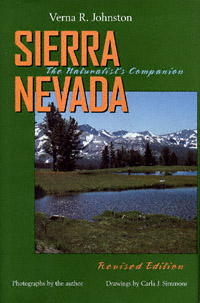 | Title: Sierra Nevada: the naturalist's companion Author: Johnston, Verna R Published: University of California Press, 1998 Subjects: Environmental Studies | Environmental Studies | California and the West Publisher's Description: All lovers of the mountains will welcome Verna Johnston's new and completely updated edition of her classic, Sierra Nevada , originally published in 1970. A professional biologist, veteran ornithologist, and well-known wildlife photographer, Johnston is the perfect guide for a natural-history trip into the Sierra. Regardless of how one explores the magnificent 400-mile-long mountain range, on foot or by car, in an armchair or a classroom, this is the book to have.Beginning with the western foothills, Johnston evokes a vivid picture of the varied plant and animal life encountered as the elevation increases, tops the crest, and drops to the more precipitous, arid eastern Sierra slope. The reader is taken through chaparral and mountain meadows, pine and fir forests, granite expanses and snowy peaks. Johnston writes of the Native Americans' uses and stewardship of the land, the role of fire in forest ecology, the eras of sheep herders and loggers, the work of John Muir and other preservationists, and the battles to save Mono Lake and Lake Tahoe. Her lifetime of field experience and discovery offers intimate observations of rarely recorded events: the courtship of the Sierra Nevada salamander, a wolverine attacking two bears, a fight to the death between a skink and a scorpion.Many changes have occurred in the Sierra since the first edition of this book was published, including acid snow, tensions involving human and cougar habitats, and an ominous drop in amphibian populations. Johnston documents these events and updates the ecological research in the rich, evocative writing style that makes her book a naturalist's treasure. This is a guide to the Sierra Nevada for the next millennium. [brief] Similar Items |
| 2. | 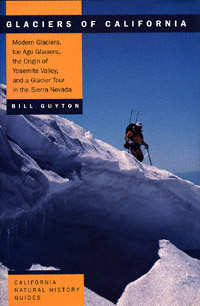 | Title: Glaciers of California: modern glaciers, ice age glaciers, origin of Yosemite Valley, and a glacier tour in the Sierra Nevada Author: Guyton, Bill 1932- Published: University of California Press, 1998 Subjects: Science | Geology | Natural History | California and the West | Geography Publisher's Description: Glaciers in sunny California? Many people will be surprised to learn that there are several hundred in this state, ranging in size from the impressive Whitney Glacier on Mt. Shasta and the Palisade Glacier in the Sierra Nevada to tiny glacierets. While California's glaciers are small compared to those in the northern Rockies or the European Alps, each one is interesting and some are suitable for exploring. Also of note is the fact that Ice Age glaciers carved California's most spectacular mountain scenery - the High Sierra was glaciated several times and glacial landforms are prominent features of the Sierran landscape today.Bill Guyton summarizes the history of the discovery of Ice Age glaciation and modern-day glaciers in California, as well as the development of modern ideas about the state's glacial history. He describes the controversy about the origin of Yosemite Valley and quotes from the colorful accounts of early mountain explorers such as John Muir, Josiah Whitney, and François Matthes. His book provides a primer on glaciers and glacial landforms, a glossary of technical terms, helpful illustrations, and a 100-mile Sierra field trip guide for readers who want to see glaciers and glacial features for themselves. Glaciers of California will make any visit to the mountains more interesting, whether one is carrying a camera, crampons, or a fishing pole. [brief] Similar Items |
| 3. | 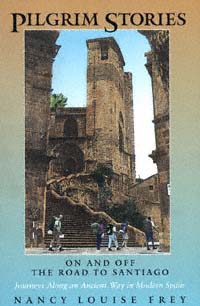 | Title: Pilgrim stories: on and off the road to Santiago Author: Frey, Nancy Louise 1968- Published: University of California Press, 1998 Subjects: Religion | Anthropology | Christianity | European History Publisher's Description: Each year thousands of men and women from more than sixty countries journey by foot and bicycle across northern Spain, following the medieval pilgrimage road known as the Camino de Santiago. Their destination is Santiago de Compostela, where the remains of the apostle James are said to be buried. These modern-day pilgrims and the role of the pilgrimage in their lives are the subject of Nancy Louise Frey's fascinating book.Unlike the religiously-oriented pilgrims who visit Marian shrines such as Lourdes, the modern Road of St. James attracts an ecumenical mix of largely well-educated, urban middle-class participants. Eschewing comfortable methods of travel, they choose physically demanding journeys, some as long as four months, in order to experience nature, enjoy cultural and historical patrimony, renew faith, or cope with personal trauma.Frey's anthropological study focuses on the remarkable reanimation of the Road that has gained momentum since the 1980s. Her intensive fieldwork (including making the pilgrimage several times herself) provides a colorful portrayal of the pilgrimage while revealing a spectrum of hopes, discontents, and desires among its participants, many of whom feel estranged from society. The Camino's physical and mental journey offers them closer community, greater personal knowledge, and links to the past and to nature.But what happens when pilgrims return home? Exploring this crucial question Frey finds that pilgrims often reflect deeply on their lives and some make significant changes: an artistic voice is discovered, a marriage is ended, meaningful work is found. Other pilgrims repeat the pilgrimage or join a pilgrims' association to keep their connection to the Camino alive. And some only remain pilgrims while on the road. In all, Pilgrim Stories is an exceptional prism through which to understand the desires and dissatisfactions of contemporary Western life at the end of the millennium."Feet are touched, discussed, massaged, [and] become signs of a journey well traveled: 'I did it all on foot!' . . . Pilgrims give feet a power and importance not recognized in daily life, as a causeway and direct channel to the road, the past, meaningful relations, nature, and the self." [brief] Similar Items |
| 4. | 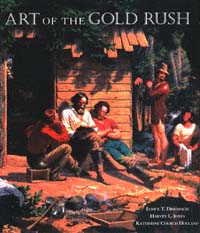 | Title: Art of the gold rush Author: Driesbach, Janice Tolhurst Published: University of California Press, 1998 Subjects: Art | California and the West | Californian and Western History Publisher's Description: The California Gold Rush captured the get-rich dreams of people around the world more completely than almost any event in American history. This catalog, published in celebration of the sesquicentennial of the 1848 discovery of gold at Sutter's Mill, shows the vitality of the arts in the Golden State during the latter nineteenth century and documents the dramatic impact of the Gold Rush on the American imagination.Among the throngs of gold-seekers in California were artists, many self-taught, others formally trained, and their arrival produced an outpouring of artistic works that provide insights into Gold Rush events, personages, and attitudes. The best-known painting of the Gold Rush era, C.C. Nahl's Sunday Morning in the Mines (1872), was created nearly two decades after gold fever had subsided. By then the Gold Rush's mythic qualities were well established, and new allegories - particularly the American belief in the rewards of hard work and enterprise - can be seen on Nahl's canvas. Other works added to the image of California as a destination for ambitious dreamers, an image that prevails to this day. In bringing together a range of art and archival material such as artists' diaries and contemporary newspaper articles, The Art of the Gold Rush broadens our understanding of American culture during a memorable period in the nation's history. [brief] Similar Items |
| 5. | 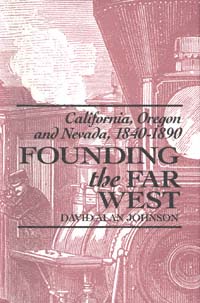 | Title: Founding the Far West: California, Oregon, and Nevada, 1840-1890 Author: Johnson, David Alan 1950- Published: University of California Press, 1992 Subjects: History | United States History | Californian and Western History | California and the West Publisher's Description: Founding the Far West is an ambitious and vividly written narrative of the early years of statehood and statesmanship in three pivotal western territories. Johnson offers a model example of a new approach to history that is transforming our ideas of how America moved west, one that breaks the mold of "regional" and "frontier" histories to show why Western history is also American history.Johnson explores the conquest, immigration, and settlement of the first three states of the western region. He also investigates the building of local political customs, habits, and institutions, as well as the socioeconomic development of the region. While momentous changes marked the Far West in the later nineteenth century, distinctive local political cultures persisted. These were a legacy of the pre-Civil War conquest and settlement of the regions but no less a reflection of the struggles for political definition that took place during constitutional conventions in each of the three states.At the center of the book are the men who wrote the original constitutions of these states and shaped distinctive political cultures out of the common materials of antebellum American culture. Founding the Far West maintains a focus on the individual experience of the constitution writers - on their motives and ambitions as pioneers, their ideological intentions as authors of constitutions, and the successes and failures, after statehood, of their attempts to give meaning to the constitutions they had produced. [brief] Similar Items |
| 6. | 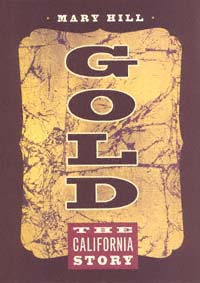 | Title: Gold: the California story Author: Hill, Mary 1923- Published: University of California Press, 2000 Subjects: California and the West | Californian and Western History | Geology | Natural History Publisher's Description: The discovery of gold in 1848 catapulted California into statehood and triggered environmental, social, political, and economic events whose repercussions are still felt today. Mary Hill combines her scientific training with a flair for storytelling to present the history of gold in California from the distant geological past through the wild days of the Gold Rush to the present.The early days of gold fever drew would-be miners from around the world, many enduring great hardships to reach California. Once here, they found mining to be backbreaking work and devised machines to help recover gold. These machines pawed gravel from river bottoms and tore apart mountainsides, wreaking environmental havoc that silted rivers, ruined farmlands, and provoked the world's first environmental conflict settled in the courts. Native Americans were nearly wiped out by invading miners or their diseases, and many Spanish-speaking settlers - Californios - were pushed aside.Hill writes of gold's uses in today's world for everything from coins to coffins, gourmet foods to spacecraft. Her comprehensive overview of gold's impact on California includes illustrated explanations of geology and mining in nontechnical language as well as numerous illustrations, maps, and photographs. [brief] Similar Items |
| 7. | 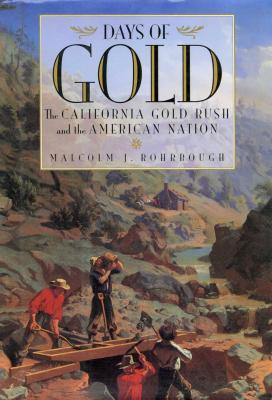 | Title: Days of gold: the California Gold Rush and the American nation Author: Rohrbough, Malcolm J Published: University of California Press, 1997 Subjects: History | California and the West | Californian and Western History | United States History | American Studies | Gender Studies Publisher's Description: On the morning of January 24, 1848, James W. Marshall discovered gold in California. The news spread across the continent, launching hundreds of ships and hitching a thousand prairie schooners filled with adventurers in search of heretofore unimagined wealth. Those who joined the procession - soon called 49ers - included the wealthy and the poor from every state and territory, including slaves brought by their owners. In numbers, they represented the greatest mass migration in the history of the Republic.In this first comprehensive history of the Gold Rush, Malcolm J. Rohrbough demonstrates that in its far-reaching repercussions, it was the most significant event in the first half of the nineteenth century. No other series of events between the Louisiana Purchase and the Civil War produced such a vast movement of people; called into question basic values of marriage, family, work, wealth, and leisure; led to so many varied consequences; and left such vivid memories among its participants.Through extensive research in diaries, letters, and other archival sources, Rohrbough uncovers the personal dilemmas and confusion that the Gold Rush brought. His engaging narrative depicts the complexity of human motivation behind the event and reveals the effects of the Gold Rush as it spread outward in ever-widening circles to touch the lives of families and communities everywhere in the United States. For those who joined the 49ers, the decision to go raised questions about marital obligations and family responsibilities. For those men - and women, whose experiences of being left behind have been largely ignored until now - who remained on the farm or in the shop, the absences of tens of thousands of men over a period of years had a profound impact, reshaping a thousand communities across the breadth of the American nation. [brief] Similar Items |
| 8. | 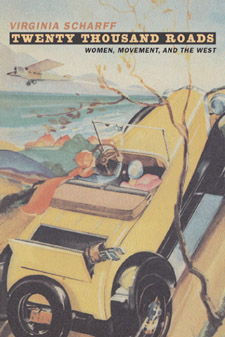 | Title: Twenty thousand roads: women, movement, and the West Author: Scharff, Virginia Published: University of California Press, 2002 Subjects: History | Women's Studies | California and the West Publisher's Description: From Sacagawea's travels with Lewis and Clark to rock groupie Pamela Des Barres's California trips, women have moved across the American West with profound consequences for the people and places they encounter. Virginia Scharff revisits a grand theme of United States history - our restless, relentless westward movement--but sets out in new directions, following women's trails from the early nineteenth to the late twentieth centuries. In colorful, spirited stories, she weaves a lyrical reconsideration of the processes that created, gave meaning to, and ultimately shattered the West. Twenty Thousand Roads introduces a cast of women mapping the world on their own terms, often crossing political and cultural boundaries defined by male-dominated institutions and perceptions. Scharff examines the faint traces left by Sacagawea and revisits Susan Magoffin's famed honeymoon journey down the Santa Fe Trail. We also meet educated women like historian Grace Hebard and government extension agent Fabiola Cabeza de Baca, who mapped the West with different voyages and visions. Scharff introduces women whose lives gave shape to the forces of gender, race, region, and modernity; participants in exploration, war, politics, empire, and struggles for social justice; and movers and shakers of everyday family life. This book powerfully and poetically shows us that to understand the American West, we must examine the lives of women who both built and resisted American expansion. Scharff remaps western history as she reveals how moving women have shaped our past, present, and future. [brief] Similar Items |
| 9. | 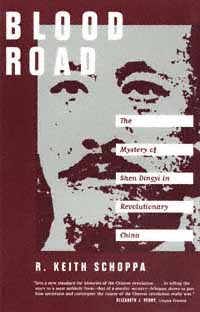 | Title: Blood road: the mystery of Shen Dingyi in revolutionary China Author: Schoppa, R. Keith 1943- Published: University of California Press, 1995 Subjects: History | Asian History | China | Politics Publisher's Description: Blood Road is a complex mix of social history, literary analysis, political biography, and murder mystery. It explores and analyzes the social and cultural dynamics of the Chinese revolution of the 1920s by focusing on the mysterious 1928 assassination of Shen Dingyi - revolutionary, landlord, politician, poet, journalist, educator, feminist, and early member of both the Communist and Nationalist parties.The search for Shen's killer details the contours of revolutionary change in different spatial contexts - metropolitan Shanghai, the provincial capital Hangzhou, and Shen's home village of Yaqian. Several interrelated themes emerge in this dramatic story of revolution: the nature of social identity, the role of social networks, the political import of place, and the centrality of process in historical explanation. It contributes significantly to a new understanding of Chinese revolutionary culture and the 1920s revolution in particular. But Blood Road remains at base a story of people linked in various relationships who were thrust, often without choice, into treacherous revolutionary currents that shaped, twisted, and destroyed their lives. [brief] Similar Items |
| 10. | 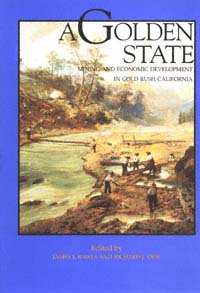 | Title: A golden state: mining and economic development in gold rush California Author: Rawls, James J Published: University of California Press, 1999 Subjects: California and the West | American Studies | Natural History | Geography | Californian and Western History | United States History Publisher's Description: California's storied Gold Rush triggered momentous changes not only for the state, but also for the nation and the world. The economic impact of that epoch-making event is the focus of the second volume of the California History Sesquicentennial Series. The chapter contributors offer a range of perspectives, including commentaries that reflect the new scholarship of environmental and resource history. Together, the essays and more than 90 illustrations show how the Gold Rush precipitated a veritable economic revolution whose effects continue to this day.Among the topics given a fresh interpretation are the relationship between technology and society; the environmental impact from mining and the sudden increase in California's population; the influence of the Gold Rush on agriculture, manufacturing, banking, and transportation; and its impact on the peoples and economies of Latin America, Europe, and Asia. The popular image of the independent prospector is also examined anew, as is the role of different groups of industrial workers, including Chinese, Mexicans, and women.The Gold Rush was a multiplier, an event that accelerated a chain of interrelated consequences that in turn accelerated economic growth. But it also touched a deep-seated nerve in the human psyche and unleashed economic forces, for good or ill, that transformed California forever into a Golden State. [brief] Similar Items |
| 11. | 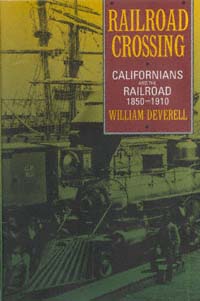 | Title: Railroad crossing: Californians and the railroad, 1850-1910 Author: Deverell, William Francis Published: University of California Press, 1994 Subjects: History | California and the West | United States History | Californian and Western History Publisher's Description: Nothing so changed nineteenth-century America as did the railroad. Growing up together, the iron horse and the young nation developed a fast friendship. Railroad Crossing is the story of what happened to that friendship, particularly in California, and it illuminates the chaos that was industrial America from the middle of the nineteenth century through the first decade of the twentieth.Americans clamored for the progress and prosperity that railroads would surely bring, and no railroad was more crucial for California than the transcontinental line linking East to West. With Gold Rush prosperity fading, Californians looked to the railroad as the state's new savior. But social upheaval and economic disruption came down the tracks along with growth and opportunity.Analyzing the changes wrought by the railroad, William Deverell reveals the contradictory roles that technology and industrial capitalism played in the lives of Americans. That contrast was especially apparent in California, where the gigantic corporate "Octopus" - the Southern Pacific Railroad - held near-monopoly status. The state's largest employer and biggest corporation, the S.P. was a key provider of jobs and transportation - and wielder of tremendous political and financial clout.Deverell's lively study is peopled by a rich and disparate cast: railroad barons, newspaper editors, novelists, union activists, feminists, farmers, and the railroad workers themselves. Together, their lives reflect the many tensions - political, social, and economic - that accompanied the industrial transition of turn-of-the-century America. [brief] Similar Items |
| 12. |  | Title: Contested Eden: California before the Gold Rush Author: Gutiérrez, Ramón A 1951- Published: University of California Press, 1998 Subjects: History | California and the West | Californian and Western History | United States History | Native American Ethnicity | Environmental Studies | Natural History | American Studies Publisher's Description: Celebrating the 150th birthday of the state of California offers the opportunity to reexamine the founding of modern California, from the earliest days through the Gold Rush and up to 1870. In this four-volume series, published in association with the California Historical Society, leading scholars offer a contemporary perspective on such issues as the evolution of a distinctive California culture, the interaction between people and the natural environment, the ways in which California's development affected the United States and the world, and the legacy of cultural and ethnic diversity in the state. California before the Gold Rush , the first California Sesquicentennial volume, combines topics of interest to scholars and general readers alike. The essays investigate traditional historical subjects and also explore such areas as environmental science, women's history, and Indian history. Authored by distinguished scholars in their respective fields, each essay contains excellent summary bibliographies of leading works on pertinent topics. This volume also features an extraordinary full-color photographic essay on the artistic record of the conquest of California by Europeans, as well as over seventy black-and-white photographs, some never before published. [brief] Similar Items |
| 13. | 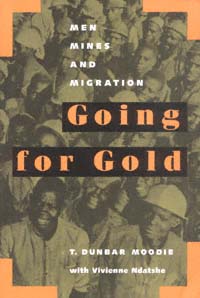 | Title: Going for gold: men, mines, and migration Author: Moodie, T. Dunbar Published: University of California Press, 1994 Subjects: Sociology | African Studies | Social Theory | Men and Masculinity Publisher's Description: This book tells the story of the lives of migrant black African men who work on the South African gold mines, told from their own point of view and, as much as possible, in their own words. Dunbar Moodie examines the operation of local power structures and resistances, changes in production techniques, the limits and successes of unionization, and the nature of ethnic conflicts at different periods and on different terrains of struggle. He treats his subject thematically and historically, examining how notions of integrity, manhood, sexuality, work, power, solidarity, and violence have all changed over time, especially with the shift to a proletarianized work force on the mines in the 1970s. Moodie integrates analyses of individual life-strategies with theories of social change, illuminating the ways in which these play off each other in historically significant ways. He shows how human beings (in this case, African men) build integrity and construct their own social order, even in situations of apparent total repression. [brief] Similar Items |
| 14. | 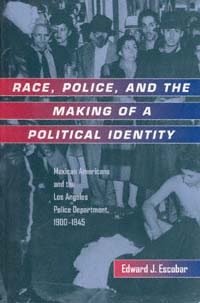 | Title: Race, police, and the making of a political identity: Mexican Americans and the Los Angeles Police Department, 1900-1945 Author: Escobar, Edward J 1946- Published: University of California Press, 1999 Subjects: History | California and the West | Latin American History | Latino Studies | Social Problems | Politics | Californian and Western History | Urban Studies | Criminology | Criminology Publisher's Description: In June 1943, the city of Los Angeles was wrenched apart by the worst rioting it had seen to that point in the twentieth century. Incited by sensational newspaper stories and the growing public hysteria over allegations of widespread Mexican American juvenile crime, scores of American servicemen, joined by civilians and even police officers, roamed the streets of the city in search of young Mexican American men and boys wearing a distinctive style of dress called a Zoot Suit. Once found, the Zoot Suiters were stripped of their clothes, beaten, and left in the street. Over 600 Mexican American youths were arrested. The riots threw a harsh light upon the deteriorating relationship between the Los Angeles Mexican American community and the Los Angeles Police Department in the 1940s.In this study, Edward J. Escobar examines the history of the relationship between the Los Angeles Police Department and the Mexican American community from the turn of the century to the era of the Zoot Suit Riots. Escobar shows the changes in the way police viewed Mexican Americans, increasingly characterizing them as a criminal element, and the corresponding assumption on the part of Mexican Americans that the police were a threat to their community. The broader implications of this relationship are, as Escobar demonstrates, the significance of the role of the police in suppressing labor unrest, the growing connection between ideas about race and criminality, changing public perceptions about Mexican Americans, and the rise of Mexican American political activism. [brief] Similar Items |
| 15. | 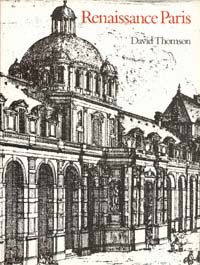 | Title: Renaissance Paris: architecture and growth, 1475-1600 Author: Thomson, David 1912- Published: University of California Press, 1985 Subjects: Art | Architecture Publisher's Description: In the modern literature on Renaissance art and architecture, Paris has often been considered the Cinderella of the European capitals. The prestigious buildings that were erected soon after François I decided in 1528 to make Paris his residence have long since been lost. Thomson, however, restores t . . . [more] Similar Items |
| 16. | 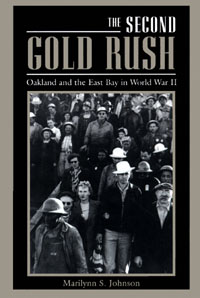 | Title: The second gold rush: Oakland and the East Bay in World War II Author: Johnson, Marilynn S Published: University of California Press, 1994 Subjects: History | Urban Studies | Californian and Western History | American Studies | California and the West | Ethnic Studies Publisher's Description: More than any event in the twentieth century, World War II marked the coming of age of America's West Coast cities. Almost overnight, new war industries prompted the mass urban migration and development that would trigger lasting social, cultural, and political changes. For the San Francisco Bay Area, argues Marilynn Johnson, the changes brought by World War II were as dramatic as those brought by the gold rush a century earlier.Focusing on Oakland, Richmond, and other East Bay shipyard boomtowns, Johnson chronicles the defense buildup, labor migration from the South and Midwest, housing issues, and social and racial conflicts that pitted newcomers against longtime Bay Area residents. She follows this story into the postwar era, when struggles over employment, housing, and civil rights shaped the urban political landscape for the 1950s and beyond. She also traces the cultural legacy of war migration and shows how Southern religion and music became an integral part of Bay Area culture.Johnson's sources are wide-ranging and include shipyard records, labor histories, police reports, and interviews. Her findings place the war's human drama at center stage and effectively recreate the texture of daily life in workplace, home, and community. Enriched by the photographs of Dorothea Lange and others, The Second Gold Rush makes an important contribution to twentieth-century urban studies as well as to California history. [brief] Similar Items |
| 17. | 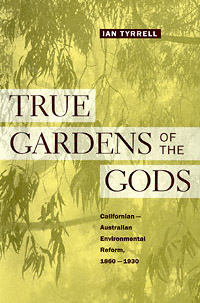 | Title: True gardens of the gods: Californian-Australian environmental reform, 1860-1930 Author: Tyrrell, Ian R Published: University of California Press, 1999 Subjects: History | California and the West | Environmental Studies Publisher's Description: One of the most critical environmental challenges facing both Californians and Australians in the 1860s involved the aftermath of the gold rushes. Settlers on both continents faced the disruptive impacts of mining, grazing, and agriculture; in response to these challenges, environmental reformers attempted to remake the natural environment into an idealized garden landscape. As this cutting-edge history shows, an important result of this nineteenth-century effort to "renovate" nature was a far-reaching exchange of ideas between the United States - especially in California - and Australia. Ian Tyrrell demonstrates how Californians and Australians shared plants, insects, personnel, technology, and dreams, creating a system of environmental exchange that transcended national and natural boundaries. True Gardens of the Gods traces a new nineteenth-century environmental sensibility that emerged from the collision of European expansion with these frontier environments.Tyrrell traces historical ideas and personalities, provides in-depth discussions of introduced plants species (such as the eucalyptus and Monterey Pine), looks at a number of scientific programs of the time, and measures the impact of race, class, and gender on environmental policy. The book represents a new trend toward studying American history from a transnational perspective, focusing especially on a comparison of American history with the history of similar settler societies. Through the use of original research and an innovative methodology, this book offers a new look at the history of environmentalism on a regional and global scale. [brief] Similar Items |
| 18. | 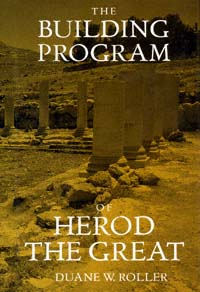 | Title: The building program of Herod the Great Author: Roller, Duane W Published: University of California Press, 1998 Subjects: Classics | Architecture | Ancient History | Archaeology Publisher's Description: Herod the Great, King of Judaea from 444 B.C., is known as one of the world's great villains. This notoriety has overshadowed his actual achievements, particularly his role as a client king of Rome during Augustus's reign as emperor. An essential aspect of Herod's responsibilities as king of Judaea was his role as a builder. Remarkably innovative, he created an astonishing record of architectural achievement, not only in Judaea but also throughout Greece and the Roman east. Duane W. Roller systematically presents and discusses all the building projects known to have been initiated by Herod, and locates this material in a broad historical and cultural context.Bringing together previously inaccessible material, Roller enriches our understanding of the enigmatic Herod and provides new insights into Roman architecture. Herod was instrumental in the diffusion of the Augustan architectural revolution into the provinces and was the first to build outside Italy such Italian architectural forms as the basilica, amphitheater, villa, and Italian temple. Herod's legacy provided a groundwork for the architectural Romanization of the east, influencing the construction of the great temple complexes and palaces so familiar from later Roman architecture.Herod, like Augustus himself, was not only interested in architecture but also in diplomatic and financial contacts among cities of the region. In addition to providing a repertorium of the building projects, this study is also an exploration of international relations in the eastern Mediterranean at the beginning of the Roman imperial period. [brief] Similar Items |
| 19. | 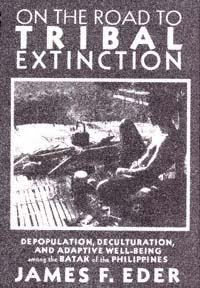 | Title: On the road to tribal extinction: depopulation, deculuration, and adaptive well-being among the Batak of the Philippines Author: Eder, James F Published: University of California Press, 1987 Subjects: Anthropology | Cultural Anthropology | Southeast Asia Publisher's Description: The cultural and even physical extinction of the world's remaining tribal people is a disturbing phenomenon of our time. In his study of the Batak of the Philippines, James Eder explores the adaptive limits of small human populations facing the ecological changes, social stresses, and cultural disru . . . [more] Similar Items |
| 20. | 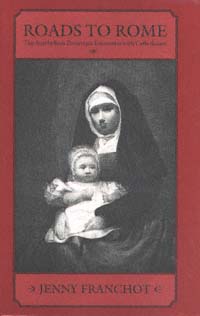 | Title: Roads to Rome: the antebellum Protestant encounter with Catholicism Author: Franchot, Jenny 1953- Published: University of California Press, 1994 Subjects: Literature | Literary Theory and Criticism | American Literature | American Studies | United States History | Christianity Publisher's Description: The mixture of hostility and fascination with which native-born Protestants viewed the "foreign" practices of the "immigrant" church is the focus of Jenny Franchot's cultural, literary, and religious history of Protestant attitudes toward Roman Catholicism in nineteenth-century America.Franchot analyzes the effects of religious attitudes on historical ideas about America's origins and destiny. She then focuses on the popular tales of convent incarceration, with their Protestant "maidens" and lecherous, tyrannical Church superiors. Religious captivity narratives, like those of Indian captivity, were part of the ethnically, theologically, and sexually charged discourse of Protestant nativism.Discussions of Stowe, Longfellow, Hawthorne, and Lowell - writers who sympathized with "Romanism" and used its imaginative properties in their fiction - further demonstrate the profound influence of religious forces on American national character. [brief] Similar Items |